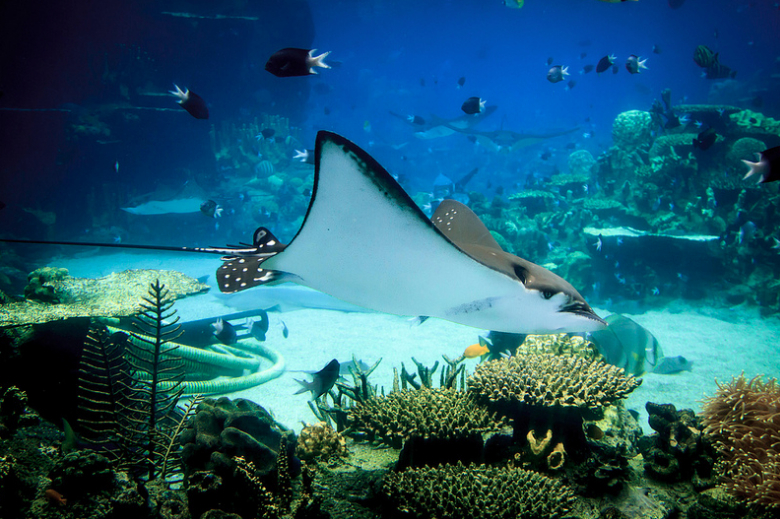Spotted Eagle Rays
Welcome to our epic webpage dedicated to Aetobatus narinari,
colloquially known as the spotted eagle ray. Throughout this
website, you'll learn everything you have ever wanted to know about
these majestic creatures, including their
classification,
habitat,
form/functions,
reproduction,
interactions, and some
cool facts. A. narinari
inhabit coral reefs and bays in warm, tropical regions around the
globe. They have been observed in the waters surrounding Hawaii,
Peru, Bermuda, South Africa, and Australia. They can even be found
in your local aquarium!

Mutliple research studies have found that there are significant
geographic differences in morphology between Aetobatus narinari
found in various regions of the world (Richards et at. 2009,
Tagliafico et al. 2012) and thus, can be considered a species
complex. Spotted eagle rays are classified by the International
Union for Conservation of Nature (IUCN) Red List as near threatened,
especially since they are vulnerable to overfishing and are often
caught as bycatch in commercial fisheries. There are several small
fisheries that target spotted eagle rays for their meat, mainly in
Venezuela and the Southern Gulf of Mexico (Tagliafico et al. 2012).%20D%20Atkinson.jpg)
Most eagle rays have a disc width of about six feet, though some specimens can reach lengths up to 12 feet. They posses long, slender tails with venomous spines at their base. One of the most striking features of these organisms are the vivid white spots and rings found on the dorsal side of their bodies. Their spots contrast intensely with the rest of their body, which can range in color from black to dark blue.
This webpage was created for our Organismal Biology class at the University of Wisconsin - La Crosse. If you are interested in learning about other fascinating organisms, feel free to visit multipleorganisms.net and check them out!
Want to learn more? Start by navigating to the Classification page.
The spotted eagle ray photo at the top of our webpage belongs to Markus Studer.